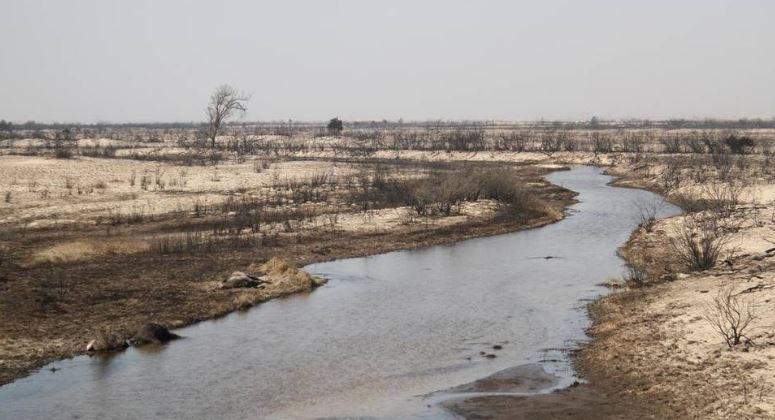At issue is the cattle that survived the wildfires but lost their pastures. Ranchers and others say some of the grass on CRP land could provide grazing until pastures have recovered from the fires and fences can be rebuilt.
Katherine Burgess
Acres of the tall, generally untouched grass show up all across Kansas. But ranchers in fire-damaged counties are hoping that their cattle will be allowed to graze on the sensitive land.
They have Gov. Sam Brownback on their side: He, along with the governors of Texas, New Mexico and Oklahoma, wrote the U.S. Department of Agriculture on March 10 urging that grazing restrictions be lifted temporarily for the Conservation Reserve Program (CRP) in their states.
At issue is the cattle that survived the wildfires but lost their pastures. Ranchers and others say some of the grass on CRP land could provide grazing until pastures have recovered from the fires and fences can be rebuilt.
“That would help tremendously,” said Jeff Kay, owner of Ashland Feed and Seed, who has been coordinating relief efforts in Clark County. “There’s a lot of acres that burned CRP, but there’s a lot of acres that can be used.”
The March 6 fire burned more than 700,000 acres and destroyed millions of dollars of property.
The Conservation Reserve Program, usually referred to as CRP, is administered by the Farm Service Agency (FSA). Farmers agree to stop using agriculturally sensitive land for agricultural production and instead plant species that improve environmental health and quality, receiving a 10- to 15-year contract and a rental payment in exchange.
Rod Winkler, conservation division director for the FSA in Kansas, said the agency has limited authority to ease grazing restrictions on the land. The agency has allowed grazing on CRP land in 13 counties designated as being under severe drought, but the grazing has to stop during nesting season, which begins April 15.
Under normal circumstances, managed grazing is allowed on CRP land only after nesting season, which doesn’t end until July 15.
CRP was initially started in 1985 when there was an overproduction of commodities, particularly grain. Having CRP decreased some crop land and was later found to benefit wildlife.
Anything allowing cattle to graze on the CRP land during nesting season or in counties not under severe drought would have to be determined by the federal government, Winkler said.
“Emergency grazing authorization would provide immediate relief to livestock producers in areas affected by the ongoing wildfires,” the four governors wrote in their letter.
Randy Rodgers spent 30 years as a wildlife biologist, specializing in grassland birds like pheasant, quail and prairie chickens. He knows just how important the CRP program has been to reviving grassland species that were in decline.
Rodgers and his wife, who live in Hays, also own about 700 acres of CRP land.
Taking highly erodible land out of production has benefited birds like ring-necked pheasants, prairie chickens, grasshopper sparrows, meadowlarks and “everything in between,” Rodgers said.
However, Rodgers also thinks that allowing cattle to graze on CRP land on occasion — even during nesting season for those same birds — isn’t harmful. Although CRP land shouldn’t be grazed every year, Rodgers said, grazing it for one year might actually benefit it.
Before Europeans settled the prairies, fire and grazing worked together to cause “periodic disturbance,” something necessary for the long-term health of the grasslands, Rodgers said.
“You can’t just leave it alone and expect it to remain healthy,” Rodgers said. “While yes, it would keep that CRP habitat a little shorter for the year it was grazed, it would likely enhance the long-term health of those stands of grass.”
Free Range Report



